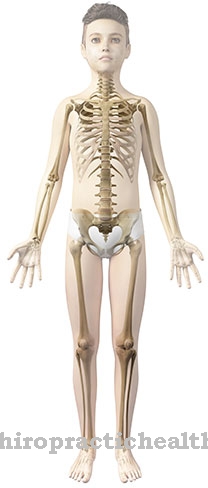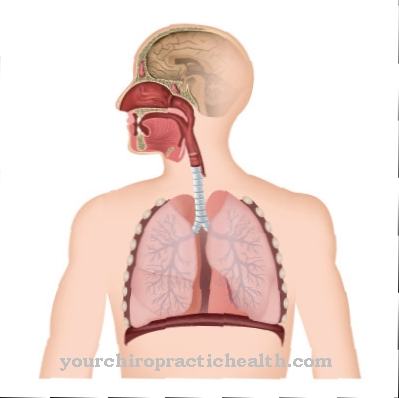At a Astigmatism, Astuteness or astigmatism the healthy curvature of the cornea is impaired due to various possible causes. The recognition of points is influenced by this; they are perceived as lines.
What is astigmatism?
.jpg)
© Neyro - stock.adobe.com
Astigmatism is also known as astigmatism or astigmatism and is an eye defect that can affect sharp vision. A corneal curvature is present when its curvature deviates from the natural curvature that the cornea of a person with normal vision has.
Due to the curvature of the cornea, light falling on the eye cannot be centered on the retina, which means that points are perceived, for example, as blurred lines. For this reason, astigmatism is often referred to as astigmatism: instead of points, blurred rods are seen.
The term astigmatism is also derived from the Greek syllable 'a' (which means 'not' in German) and the Greek word 'stigma' for 'point'; the word meaning of astigmatism is that of 'pointlessness'.
causes
Curvature of the cornea is usually congenital. However, it can also be the result of a serious injury to the cornea. Depending on the cause of the astigmatism, it is called either regular or irregular astigmatism.
Regular astigmatism is usually hereditary and is caused by the fact that planes running perpendicular to one another have different refractive powers. It is usually the case with regular astigmatism that the refraction of the vertical plane is stronger than that of the horizontal plane; in rarer cases with a corneal curvature, the horizontal plane shows a higher refraction.
Irregular astigmatism is characterized by unequal refractive powers or curvatures in the cornea, which can arise, for example, from scarred injuries. Another possible cause of irregular astigmatism is cataracts, which can cloud the optical lens.
You can find your medication here
➔ Medicines for eye infectionsSymptoms, ailments & signs
The symptoms of a curvature of the cornea depend on the strength of the curvature and the resulting refractive errors. Many people have a slight curvature of the cornea and hardly notice it or not at all in everyday life. Symptoms only appear when the curvature is greater and does not allow a sharp image both near and far.
The eye tries to make the image sharper through accommodation (adapting the refractive power) and overstrains the eye muscles. Those affected notice this in stinging eyes and headaches. In addition, the strained vision will tire the eyes more quickly.
With astigmatism there are not only problems with blurred vision, but the image is also distorted because only focal lines appear on the retina and no focal point. This is why this form of ametropia is also known as astigmatism. For example, circles are then perceived more like ovals.
Due to the uneven refraction of light, the affected eye can also react more sensitively to light. Astigmatism is most often congenital and does not usually worsen unless it is accompanied by nearsightedness, farsightedness, or presbyopia. Then the eyesight can deteriorate further. In children with a congenitally severe astigmatism, weak vision can result.
course
The course of an astigmatism depends, among other things, on its cause; if there is regular astigmatism, which is often congenital, the corneal curvature usually does not change any further.
However, astigmatism that is not treated (for example with optical aids such as contact lenses or glasses) can lead to severe headaches after a while; The headache is caused by the fact that the eye is constantly striving to achieve a sharp image through accommodation (adaptation).
The course of irregular astigmatism, which is based on a progressive disease such as cataracts, mostly depends on the course of this disease. This means that irregular astigmatism can worsen over a lifetime (or, with appropriate therapy for the underlying disease, also improve).
Complications
The astigmatism can be regular or irregular. The nature of the associated complications differs accordingly. Usually both eyes are affected, often with different eyesight.
Far-reaching problems arise if the astigmatism is not treated in time. Congenital astigmatism can be diagnosed by an ophthalmologist before the age of two. If this is neglected or only recognized incorrectly, the poor eyesight can worsen significantly.
Furthermore, important nerve pathways in the brain can only develop with deficits and in the worst case not at all. Affected patients suffer more from headache and eye pain. Seeing deteriorates with age, up to and including hardly any more objects. Special plastic glasses should be used in the child at an early stage.
Depending on the degree of astuteness, the healthy eye is temporarily masked off. Sometimes an accident, serious illness or trauma can also scar the cornea. If astigmatism only occurs in adulthood, it can be corrected relatively easily with laser surgery. However, this may only take place from the age of 18.
The procedure can also result in complications such as under or over correction of the astigmatism, infection or damage to the optic nerve. Not every laser operation guarantees that the patient will no longer need glasses afterwards.
When should you go to the doctor?
An ophthalmologist should be consulted in the event of regular eye irritation or impaired vision - regardless of whether it is near or far. By interviewing the patient and examining the eyes, the doctor can determine whether astigmatism is present and suggest a suitable therapy following the diagnosis. If the disease is diagnosed at an early stage, the symptoms can be counteracted with the help of a visual aid.
However, if the astigmatism is left untreated, it can become severe. A medical examination is therefore recommended at the latest when serious visual disturbances occur and accompanied by headaches, burning eyes and eye pain. If astigmatism has already been diagnosed, the responsible ophthalmologist should check the diopter and adjust it if necessary.
Parents who have the feeling that their child sees poorly should always make an appointment with the ophthalmologist. A specialist pediatric ophthalmology clinic should be visited with infants who do not make proper eye contact or who show other signs of impaired vision. Other contact persons are orthoptists and specialists for eye diseases.
Doctors & therapists in your area
Treatment & Therapy
Similar to the course of an astigmatism, the choice of a suitable treatment for the astigmatism also depends on its shape; if there is regular astigmatism, which is predominantly congenital, the astigmatism can be counteracted, for example, by using glasses or hard contact lenses.
Glasses that are used against astigmatism are equipped with so-called cylinder lenses. If there is an irregular astigmatism (as a result of injuries to the cornea or eye diseases), this cannot be counteracted with glasses. If the cornea is free of scars after an injury, hard contact lenses can be used for correction. If, on the other hand, the cornea shows scars due to a curvature of the cornea, a possible treatment is corneal transplantation.
In addition, astigmatism can generally be countered with surgical methods or laser treatments; How closely the visual acuity approaches normal vision after a surgical procedure depends, among other things, on the severity of the astigmatism: As a rule, the chances of achieving normal vision are higher with less pronounced astigmatism. Operative interventions involve various specific risks.
Outlook & forecast
Congenital astigmatism cannot be cured, but it can be corrected with suitable glasses or contact lenses. The prognosis is generally favorable if the visual defect is compensated for with suitable glasses or contact lenses, because the curvature of the cornea usually remains the same and does not deteriorate further. If a familial tendency is known, it is advisable to have the child's eyes examined already.The earlier the curvature is recognized, the greater the chance that the eyes will not be unnecessarily strained and that vision will deteriorate in the long term.
The situation is different with acquired astigmatism, which can result from injuries to the cornea or cataracts. In this case, the eyes should be checked regularly because blurred vision can lead to headaches and further deterioration in vision. Eye operations can also temporarily lead to astigmatism, e.g. B. in the operation of a cataract or glaucoma. In these cases, however, the curvature recedes after a while and the view is not impaired in the long term.
Surgical procedures or laser treatment can improve eyesight, but they cannot completely cure astigmatism. In addition, every operation carries a certain risk of complications.
You can find your medication here
➔ Medicines for eye infectionsprevention
Hereditary regular astigmatism cannot usually be prevented. If an astigmatism is already found in children, it can be helpful to start treatment early in order to prevent refractive errors occurring later.
A curvature of the cornea caused by injury can be prevented by adequately protecting the eyes in foreseeable dangerous situations. An aggravation of a disease-related astigmatism can be counteracted by starting treatment early.
Aftercare
In regular astigmatism, there is an inherited astigmatism. This lasts a lifetime. This makes aftercare a permanent issue. Patients consult their ophthalmologist at regular intervals. This can measure the radius of curvature with an ophthalometer or video keratoscope. After a regular check, he will prescribe a new prescription for glasses or contact lenses.
If the prescribed aids are not used, headaches can occur regularly. Concentration can also be weakened. The blurred vision becomes too stressful for the eyes, which is the most significant complication.
It is different with irregular astigmatism. Here the corneal curvature takes a progressive course and a cone-shaped bulge develops. Follow-up care consists of the use of contact lenses. The attending ophthalmologist prescribes this. Routine eye checks take place at regular intervals.
On the other hand, glasses are unsuitable for eliminating poor eyesight. Alternatively, surgery is sometimes an option. As a result, the astigmatism can even be completely corrected. Preventive measures have only proven effective in children. With them, therapy should start early in order to prevent major ametropia in adulthood.
You can do that yourself
Since astigmatism is a disease that is caused by the growth of the eye itself, the measures for self-help are very limited.
Only squinting your eyes can help in acute cases. This reduces the incident light rays, which leads to a more focused incidence of the image. Overall, this allows the disruptive - that is, incident light rays - to be corrected. However, this pure compensation mechanism is not an adequate therapy and in some cases leads to asthenopia - various symptoms, such as headache or eyelid pain, follow the constant overexertion of the eyes. In this respect, it is not recommended that the eyes squint too often.
We urgently advise against various eye therapies that are aimed at improvement. The benefits of techniques such as eye yoga or visual exercises have not been shown and are unlikely to be shown. The structural cause of astigmatism is not a muscular problem and therefore cannot be compensated for by concentration and muscle exercises.
All that remains is to compensate for astigmatism with suitable visual aids or through an operative measure.



.jpg)


.jpg)

















.jpg)



